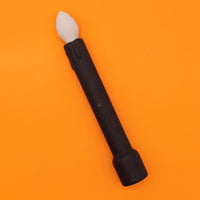It turns out that owning a vibrator, particularly more than one, has a lot of benefits.We talked with Dame CEO Al Fine and Lead Product Engineer Julia Lopez about the stigmas surrounding vibrator use and how attitudes around buying vibrators are changing in hopes of normalizing vibrator ownership. You may find it surprising that it's actually better to have two or more vibrators to mix up the type of sensation/stimulation you're experiencing. Different types of vibrators meet different needs for sexual stimulation. Lopez writes “You can explore different sensations by having multiple vibrators. You can have three very different experiences if you owned an external vibrator, an internal vibe, and a suction toy. I also like to own multiple vibrators because there’s always a chance that at least one of them is still charged!” External vibrators are designed mostly to massage the vulvar and clitoral area. Internal vibrators are designed to go inside the vagina to simulate penetration or stimulate the g-spot. Suction toys are often grouped with vibrators but actually use what’s called pressure wave technology to create puffs of air around the clitoris. One concern about owning more than one vibrator is the cost of each vibe. When you’re on a budget, it’s understandable that buying more than one vibrator may not be in the cards. If this is the case, looking for versatility in the tool is key. “Someone who likes internal and external stimulation may opt for a vibe that can be used internally because it can also be used externally. Someone who doesn’t want any internal stimulation may want to go for an external vibe that has broad and pinpoint surfaces that can offer versatile stimulation,” says Lopez. An excellent example of a versatile (and classic) external vibrator is the wand vibrator. Having more than one vibrator is a sexual wellness investment that Lopez says is gaining momentum. “The general population




















































